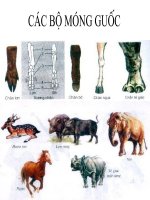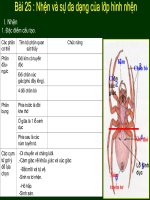Tải Giáo án tiếng Anh lớp 11 Tuần 12 sách mới - Giáo án điện tử môn tiếng Anh 11 theo tuần
Bạn đang xem bản rút gọn của tài liệu. Xem và tải ngay bản đầy đủ của tài liệu tại đây (103.65 KB, 8 trang )
<span class='text_page_counter'>(1)</span><div class='page_container' data-page=1>
<b>GIÁO ÁN TIẾNG ANH LỚP 11 TUẦN 12</b>
<b>NĂM 2019 - 2020</b>
Date of preparation:
Date of signing: <b> </b>
<b>Period 34: </b>
<b>UNIT 4: CARING FOR THOSE IN NEED</b>
<b>Part 5: Listening</b>
<b>I. Objectives</b>
By the end of the lesson, students will be able to:
<b>1. Knowledge</b>
+ know more about the achievements of people with disabilities (a famous girl with
disability)
+ know what Ss can do to support them
<b>2. Skills</b>
- improve listening skill for specific information
<b>3. Attitude</b>
- have responsible attitude towards helping people with disabilities.
<b>II. Teaching method: Integrated, mainly communicative</b>
<b>III. Teaching aids</b>
- CD & CD player, board, chalks, textbook and notebook.
<b>IV. Procedure</b>
<b>1. Class organization: </b>
Date Period Class Attendance Absentees/Notes
….. __ / __ / __ …. / ….
<b>2. Previous lesson check: </b>
- activity 3.
<b>3. New lesson:</b>
T’s and Ss’Activities Knowledge
Show pictures of Albert Einstein, Ludwig van
Beethoven and Thomas Edison
Ask:
<i>Who are they?</i>
<i>What disabilities do you think they had?</i>
1. Activity 1:
Expected answers:
</div>
<span class='text_page_counter'>(2)</span><div class='page_container' data-page=2>
Have sts read the instruction about a famous
girl with a disability and the table they have to
complete.
Play the CD. Ask sts to complete the notes
while listening.
Have sts listen the CD again and check their
answers.
Have sts compare their answers before checking
answers as a class.
Ask sts to recall what they heard and guess the
words to complete the sentences. Then play the
recording again for sts to check their answers.
Play the recording twice if necessary.
Check answers as a class & provide feedback.
Ask sts to work in groups of three or four to
discuss the question:
<i>What can you do to support people with </i>
<i>disabilities and help them succeed in life?</i>
Brainstorm ideas.
Have some sts present their reports to the class.
Give remarks
2. Activity 2:
Complete the notes while listening
Listen the CD again and check their
answers.
Compare their answers before checking
answers as a class.
<i>Keys expected</i>
Name: Nguyen Anh
Nationality: Vietnamese
Kind of disability Glass-bone disease
Interests Singing and helping charitable
campaigns
Title honoured by UNICEF Global
outstanding child with a disability.
3. Activity 3:
Recall what they heard and guess the words
to complete the sentences.
Check their answers.
Listen
<i>Keys expected</i>
1. get involved
2. over 30 times
3. broadcasting radio programmes
4. friendly and supportive
5. treated equally
4. Activity 4
Work in groups of three or four to discuss
the question:
<i>What can you do to support people with </i>
<i>disabilities and help them succeed in life?</i>
</div>
<span class='text_page_counter'>(3)</span><div class='page_container' data-page=3>
<b>4. Consolidation: </b>
- Summarize the main points:
+ Listening for specific information about a famous girl with disability
<b>5. Homework: </b>
- summarize the listening text or prepare a talk about Nguyen Anh.
- prepare for the next lesson
<b></b>
---o0o---Date of preparation:
Date of signing: <b> </b>
<b>Period 35: </b>
<b>UNIT 4: CARING FOR THOSE IN NEED</b>
<b>Part 6: Writing</b>
<b>I. Objectives</b>
By the end of the lesson, students will be able to:
<b>1. Knowledge</b>
- propose solutions to problems facing people with disabilities.
<b>2. Skills</b>
- write an article about problems facing disabled people
<b>3. Attitude</b>
- have responsible attitude towards helping people with disabilities.
<b>II. Teaching method: Integrated, mainly communicative</b>
<b>III. Teaching aids</b>
- board, chalks, textbook and notebook.
<b>IV. Procedure</b>
<b>1. Class organization: </b>
Date Period Class Attendance Absentees/Notes
….. __ / __ / __ …. / ….
<b>2. Previous lesson check: </b>
- talk about the crystal girl Phuong Anh.
<b>3. New lesson:</b>
T’s and Ss’Activities Knowledge
Give sts time to read the sample writing about
the problems that children with cognitive
1. Activity 1
</div>
<span class='text_page_counter'>(4)</span><div class='page_container' data-page=4>
impairments are facing.
Ask sts to choose the appropriate phrases (a-c)
to fill in the blanks.
Have them compare their answers with a
partner first
Ask sts to read out loud their answers to check
as a class.
Lead to the writing lesson
Ask sts to work in groups of 4, and give each
group a large size sheet of paper
Have sts read the text in their book and study
the outline.
Ask sts to discuss in groups and complete the
outline on the sheet of paper.
Encourage sts to move around to look at the
outlines of other groups.
Ask leaders of some groups to present their
outlines to the rest of the class.
Have sts work in groups of three or four to
impairments are facing.
Choose the appropriate phrases (a-c) to fill
in the blanks.
Compare their answers with a partner first
Read out loud their answers
<i>Keys expected</i>
1.c; 2.b; 3.a
2. Activity 2:
Work in groups of 4, and give each group
a large size sheet of paper
Discuss in groups and complete the
outline on the sheet of paper.
Leaders of some groups to present their
outlines to the rest of the class.
<i>Keys expected</i>
<i>Introduction</i>
Children with cognitive impairments often
face discrimination in life
<i>Main body</i>
<i>Solution 1</i>
People should learn more about children
with cognitive impairments
<i>Solution 2</i>
There should be more contacts between
people with cognitive impairments and
non-disabled people.
<i>Conclusion</i>
Better understanding and better
cooperation between the two groups of
people will change attitudes and reduce
discrimination.
</div>
<span class='text_page_counter'>(5)</span><div class='page_container' data-page=5>
choose one problem and discuss what solutions
they will recommend.
Encourage sts to make complete sentences,
using the suggestions in the table. Ask sts to
read their group’s sentences.
Provide help by correcting mistakes in grammar
or word choice.
Ask sts to work independently and write their
articles.
Ask some individuals to read their articles.
Have the rest of class give comments, and
correct errors.
Give remarks & correction
Work in groups of three or four to choose
one problem and discuss what solutions
they will recommend.
Work independently and write their
articles.
Some individuals to read their articles.
Listen to comments & correction
<b>4. Consolidation: </b>
- Summarize the main points:
+ writing an article about problems facing disabled people
<b>5. Homework: </b>
- practice the tasks.
- prepare for the next lesson
<b></b>
---o0o---Date of preparation:
Date of signing: <b> </b>
<b>Period 36: </b>
<b>UNIT 4: CARING FOR THOSE IN NEED</b>
<b>Part 7: Communication and culture</b>
<b>I. Objectives</b>
By the end of the lesson, students will be able to:
<b>1. Knowledge</b>
- listen to an introduction to a charitable organization and discussing a campaign to support
it.
- know the International Day of Persons with disabilities.
<b>2. Skills</b>
- Writing, speaking, Listening, reading
</div>
<span class='text_page_counter'>(6)</span><div class='page_container' data-page=6>
- have responsible attitude towards helping people with disabilities.
<b>II. Teaching method: Integrated, mainly communicative</b>
<b>III. Teaching aids</b>
<b>- CD & CD player, board, chalks, textbook and notebook.</b>
<b>IV. Procedure</b>
<b>1. Class organization: </b>
Date Period Class Attendance Absentees/Notes
….. __ / __ / __ …. / ….
<b>2. Previous lesson check: </b>
- check Ss’ writing.
<b>3. New lesson:</b>
T’s and Ss’Activities Knowledge
WARM-UP:
Chatting:
- Have you ever done volunteer work?
- What do you know about a charitable
organization?
Focus sts’ attention on the instructions and the
table.
Have sts guess what they are going to listen
Have them work in pairs to guess the information
and think about how to express such information
(e.g how to say the date and year, or how to
classify organizations as governmental,
non-governmental, profit, non-profit…)
Ask sts to complete the table while listening.
Have them listen again to check the answers.
Let sts compare their answers with a partner, then
check answers as a class and write them on the
board.
Have sts read the instructions and suggested
words/ phrases carefully.
Ask sts to work in groups of 4 to brain storm
I. COMMUNICATION
1. Activity 1:
<i>Keys expected</i>
1. 1988
2. non- governmental
3. clean water and good hygiene
4. have better lives
5. Life is beautiful
</div>
<span class='text_page_counter'>(7)</span><div class='page_container' data-page=7>
ideas and prepare a proposal for a new campaign
to support disabled people.
Ask some groups to present their campaigns.
Praise sts for original and interesting ideas, and
good presentation skills.
Give comments and mark
Focus sts’ attention on the logos and allow
enough time for sts to discuss how often they
think the International Day of people with
disabilities is celebrated and what its purpose is.
Invite individual sts to present their ideas.
Have sts read the text quickly to check their
guesses.
Ask sts to read the text again and answer the
questions individually.
Allow time for sts to read and underline the key
words in the questions.
Ask them to read the text and underline relevant
information
Offer help when necessary
Check answers as a class.
CULTURE
1. Activity 1:
2. Activity 2:
International Day of Persons with Disabilities
3. Activity 3:
Expected answers:
1. The United Nations
2. This special day aims at raising awareness
of disability issues and calls for support for
the rights and well-being of disabled people.
3. They are facing challenges, discrimination,
poverty and limited access to education,
employment and health care.
4. Now I know more about international
organizations and celebrations for people
with disabilities; I can express my opinion
about how to help disabled people overcome
difficulties; I can suggest themes and action
plans to celebrate the International Day of
Persons with Disabilities
<b>4. Consolidation: </b>
- Summarize the main points:
+ information about a charitable organization and the International Day of Persons with
disabilities.
<b>5. Homework: </b>
</div>
<span class='text_page_counter'>(8)</span><div class='page_container' data-page=8>
- prepare for the next lesson
Mời bạn đọc tham khảo thêm tài liệu Tiếng Anh lớp 11 tại đây:
Bài tập Tiếng Anh lớp 11 theo từng Unit:
Bài tập Tiếng Anh lớp 11 nâng cao:
</div>
<!--links-->









